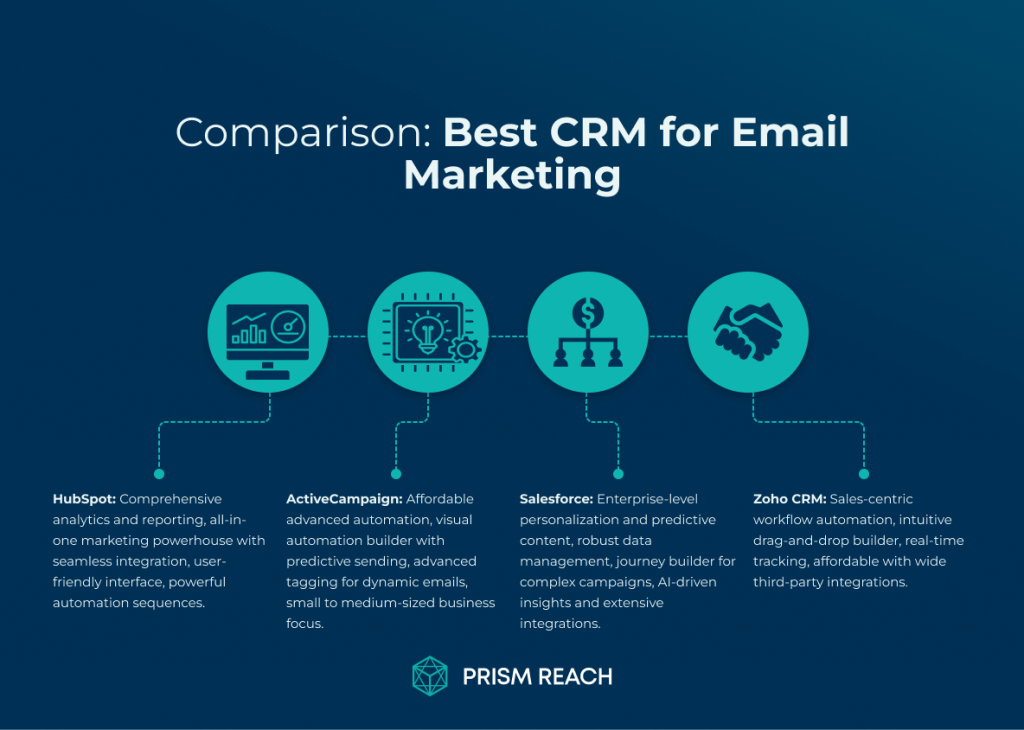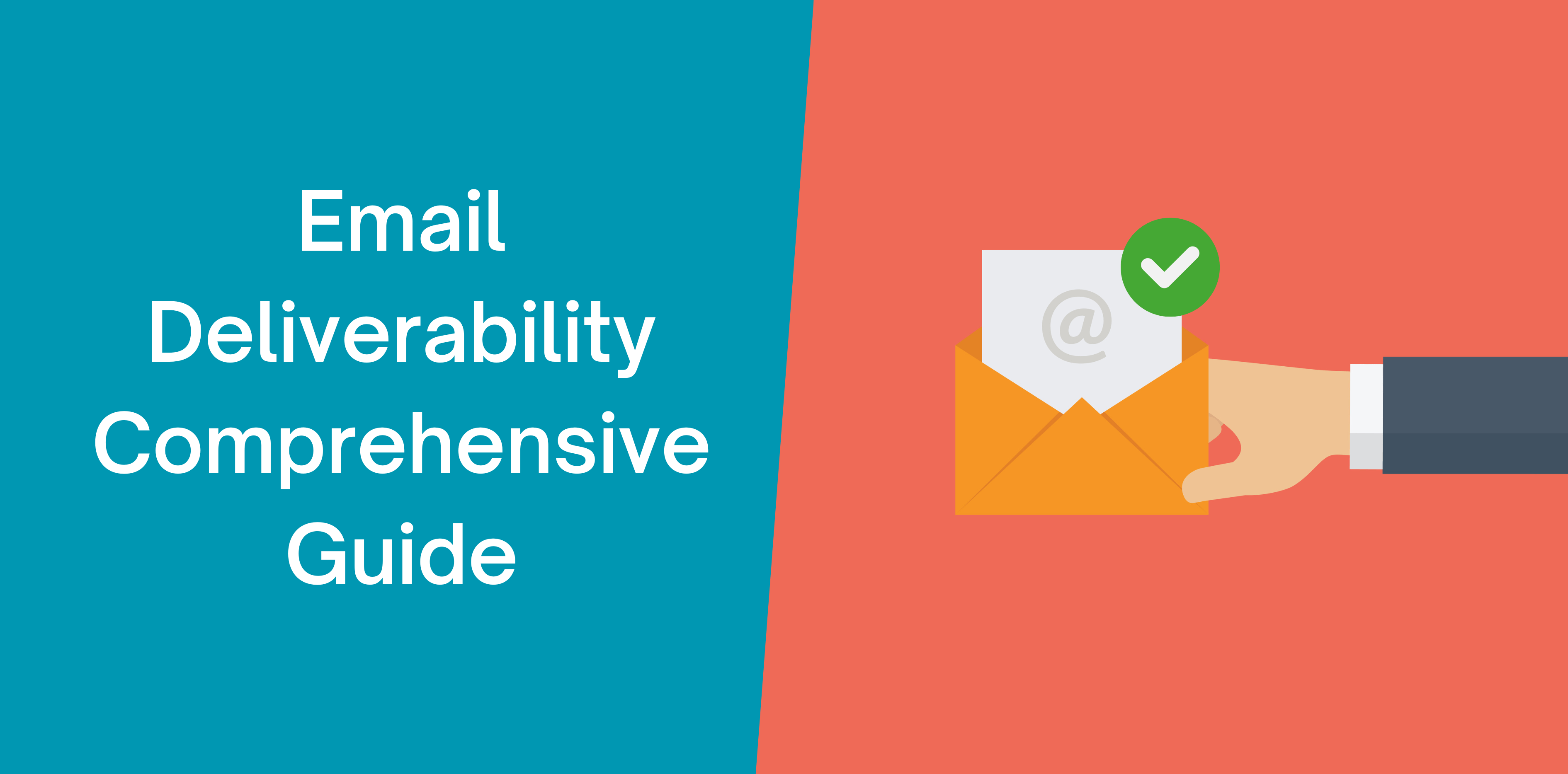
CRM: The Unsung Hero of Email Deliverability Optimization
In the dynamic world of digital marketing, email remains a cornerstone of communication and customer engagement. However, the effectiveness of email campaigns hinges on one crucial factor: deliverability. Ensuring that your emails reach the intended recipients’ inboxes, rather than languishing in spam folders, is paramount. While many marketers focus on technical aspects like SPF, DKIM, and DMARC, there’s an often-overlooked tool that can significantly enhance email deliverability: Customer Relationship Management (CRM) systems.
The Email Deliverability Landscape
Before delving into the CRM’s role, it’s important to understand the challenges of email deliverability. Email providers (like Gmail, Yahoo, and Outlook) employ sophisticated algorithms to filter out spam and protect their users from unwanted or malicious content. These algorithms consider various factors, including:
- Sender Reputation: A score assigned to your sending IP address and domain, based on your past email behavior.
- Engagement Metrics: How recipients interact with your emails (opens, clicks, replies).
- Content Quality: The content of your emails, including the use of spam trigger words and suspicious links.
- Authentication: Whether your emails are properly authenticated using SPF, DKIM, and DMARC.
- Complaint Rates: The number of recipients who mark your emails as spam.
- Bounce Rates: The percentage of emails that fail to be delivered.
Poor sender reputation, low engagement, spammy content, lack of authentication, high complaint rates, and excessive bounce rates can all lead to deliverability issues.
How CRM Enhances Email Deliverability
CRM systems, primarily designed for managing customer interactions and data, offer a wealth of benefits that directly contribute to improved email deliverability:
-
Data Segmentation and Targeting:
- Relevance is Key: Generic, untargeted emails are more likely to be ignored or marked as spam. CRM systems enable you to segment your audience based on demographics, purchase history, engagement levels, and other relevant criteria.
- Personalization: Tailor your email content to the specific interests and needs of each segment. This increases engagement and reduces the likelihood of recipients marking your emails as spam.
- Example: Instead of sending a blanket email about a new product to your entire list, you can segment your audience based on past purchases and send targeted emails to customers who have previously shown interest in similar products.
-
List Hygiene and Management:
- Maintaining a Clean List: A clean email list is essential for good deliverability. CRM systems help you identify and remove inactive subscribers, bounced email addresses, and unsubscribed contacts.
- Regular Audits: Regularly clean your email list to remove invalid or inactive addresses. This reduces bounce rates and improves your sender reputation.
- Suppression Lists: CRM systems allow you to create suppression lists to exclude certain contacts from your email campaigns. This can be useful for excluding contacts who have opted out of receiving emails or who have a history of marking your emails as spam.
-
Behavioral Insights and Engagement Tracking:
- Understanding Customer Behavior: CRM systems track how recipients interact with your emails, including opens, clicks, and conversions. This data provides valuable insights into what types of content resonate with your audience.
- Engagement-Based Segmentation: Segment your audience based on their engagement levels. For example, you can create a segment of highly engaged subscribers who consistently open and click your emails, and a segment of less engaged subscribers who may need a different approach.
- Automated Re-engagement Campaigns: Use CRM automation features to create re-engagement campaigns for inactive subscribers. These campaigns can include personalized offers, surveys, or requests for feedback.
-
Preference Management and Opt-In/Opt-Out:
- Giving Recipients Control: CRM systems allow you to collect and manage recipient preferences, such as the types of emails they want to receive and the frequency of communication.
- Easy Unsubscribe Process: Provide a clear and easy way for recipients to unsubscribe from your emails. This reduces the likelihood of them marking your emails as spam.
- Compliance with Regulations: Ensure that your email marketing practices comply with relevant regulations, such as GDPR and CAN-SPAM. CRM systems can help you manage consent and ensure that you are only sending emails to recipients who have given you permission to do so.
-
Personalization and Dynamic Content:
- Creating a Personal Touch: Personalization goes beyond just using the recipient’s name. CRM systems allow you to personalize email content based on a wide range of data points, such as their location, interests, and past purchases.
- Dynamic Content: Use dynamic content to display different content to different recipients based on their preferences or behavior. For example, you can show different product recommendations to different customers based on their past purchases.
- Increased Engagement: Personalized emails are more likely to be opened and clicked, which improves your sender reputation and deliverability.
-
Automation and Triggered Emails:
- Sending the Right Message at the Right Time: CRM systems enable you to automate email campaigns based on specific triggers, such as a new subscriber signing up, a customer making a purchase, or a recipient abandoning their shopping cart.
- Welcome Series: Create a welcome series for new subscribers to introduce them to your brand and encourage them to engage with your emails.
- Abandoned Cart Emails: Send abandoned cart emails to customers who have added items to their cart but haven’t completed the purchase. These emails can include personalized offers or reminders to encourage them to complete the purchase.
-
Feedback Loops and Complaint Management:
- Identifying and Addressing Issues: CRM systems can be integrated with feedback loops, which allow you to receive notifications when recipients mark your emails as spam.
- Prompt Action: When you receive a spam complaint, take immediate action to investigate the issue and prevent it from happening again.
- Removing Complainers: Remove contacts who have marked your emails as spam from your email list.
Choosing the Right CRM for Email Deliverability
Not all CRM systems are created equal. When choosing a CRM for email deliverability optimization, consider the following features:
- Segmentation Capabilities: The ability to segment your audience based on a wide range of criteria.
- List Management Tools: Features for cleaning and managing your email list.
- Engagement Tracking: The ability to track email opens, clicks, and conversions.
- Personalization Options: Tools for personalizing email content.
- Automation Features: The ability to automate email campaigns based on specific triggers.
- Integration with Email Service Providers (ESPs): Seamless integration with your email marketing platform.
- Reporting and Analytics: Comprehensive reporting and analytics to track your email deliverability performance.
Best Practices for CRM-Driven Email Deliverability
- Implement a Double Opt-In Process: Require new subscribers to confirm their email address before adding them to your list.
- Segment Your Audience Regularly: Continuously refine your audience segments based on engagement and behavior.
- Personalize Your Emails: Use personalization to make your emails more relevant and engaging.
- Monitor Your Sender Reputation: Regularly check your sender reputation to identify and address any issues.
- Test Your Emails: Test your emails before sending them to your entire list to ensure that they are rendering correctly and that they are not triggering spam filters.
- Comply with Email Marketing Regulations: Ensure that your email marketing practices comply with relevant regulations, such as GDPR and CAN-SPAM.
Conclusion
In the quest for optimal email deliverability, CRM systems are indispensable tools. By leveraging the data management, segmentation, personalization, and automation capabilities of CRM, marketers can significantly improve their sender reputation, increase engagement, and ensure that their emails reach the intended recipients’ inboxes. In a world where email remains a critical communication channel, investing in a CRM and adopting CRM-driven email marketing practices is a strategic imperative for success.

